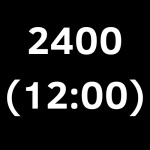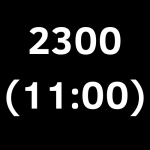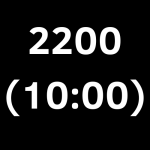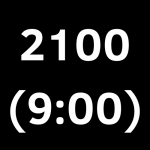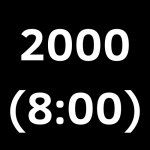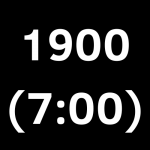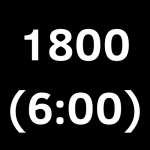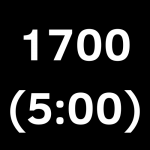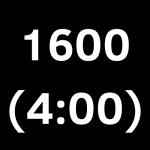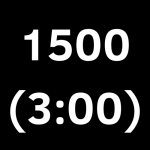Military Time Clock: A Convenient Way to Keep Track of Time
Have you ever found yourself confused by the 12-hour time format, especially when it comes to calculating time differences or scheduling appointments? If so, you’re not alone. Many people struggle with the complexities of the standard time system, which is why the military time clock was introduced as a simpler and more efficient alternative. In this blog post, we’ll explore the features and benefits of the military time clock, and current military and standard time right now as well as its significance in different time zones. So, let’s dive in and discover the world of military time. Here it is!
Current Military Time is:
Current Standard Time is:
Military Time Analog Clock
Military Time Right Now: Stay in Sync with the Military Time Clock
One of the key advantages of the military time clock is its ability to provide the current military time right at your fingertips. With the help of the military time display, you can easily determine the time in a 24-hour format. The military time clock is designed to eliminate any confusion or ambiguity that may arise from the AM/PM system, allowing for precise and accurate timekeeping.
Military Time Clock and Time Zones: A Universal Language
Time zones can often pose a challenge, especially when dealing with international travel or global communications. However, the military time clock serves as a universal language that transcends time zones. By using a consistent 24-hour format, the military time clock ensures that there is no room for misinterpretation or miscommunication when it comes to scheduling events or coordinating activities across different time zones.

Military time, also known as 24-hour clock, is a time notation system that represents the time of day using numbers from 00 to 23 instead of the conventional 1 to 12. For example, 1 pm is represented as 13:00 and midnight as 00:00.
Understanding military time can be tricky at first but with some practice and using helpful resources like a military time chart and military time converter, you’ll get the hang of it. Here are some key things to know:
Military time uses a 24-hour clock instead of 12-hour.
Numbers 13 to 24 represent 1 pm to 12 am.
To convert a normal time like 7 pm to military time, simply add 12 to the hour. So 7 pm is 19:00.
Converting from military time to normal time is the reverse – subtract 12 from times 13 to 24.
A Military Time Chart can be a useful visual to learn how the hours correspond between the two time systems. A Military Time Converter can also instantly convert between normal and military time for you to double check your conversions.
Why is the Military Time Clock Important?
The military time clock holds great importance in various domains and industries. Its significance lies in its ability to provide a standardized and unambiguous way of representing time. Here are a few reasons why the military time clock is important:
1. Precision and Accuracy:
With the military time clock, there is no room for confusion or misinterpretation. The 24-hour format ensures precision and accuracy, especially in time-sensitive situations where every minute counts.
2. Healthcare and Emergency Services:
In the healthcare and emergency services sectors, time is of the essence. The military time clock is widely used in these industries to ensure consistent and clear communication, enabling medical professionals and emergency responders to provide timely and efficient care.
3. International Business and Travel:
Global businesses and frequent travelers rely on the military time clock to coordinate meetings, flights, and appointments across different time zones. By using a standardized time format, the military time clock eliminates confusion and facilitates seamless scheduling.
Who Uses a Military Time Clock?
The military time clock is utilized by various individuals and professions that value precision and efficiency in timekeeping. Here are a few examples:
1. Military Personnel:
As the name suggests, the military time clock is extensively used by military personnel to ensure synchronized operations, accurate mission planning, and effective communication among different units.
2. Aviation Industry:
Pilots, air traffic controllers, and aviation professionals rely on the military time clock to maintain safety and efficiency in air travel. The standardized time format allows for clear and concise communication in a high-stakes environment.
3. Transportation and Logistics:
Transportation and logistics industries heavily rely on the military time clock to ensure smooth operations, timely deliveries, and efficient coordination between different stages of the supply chain.
4. International Business and Communication:
Business professionals, especially those involved in international trade and communication, use the military time clock to avoid confusion and streamline cross-border collaborations. By using a universal time format, they can schedule meetings and coordinate activities seamlessly across different time zones.
In summary, the military time clock simplifies timekeeping and facilitates clear communication in various industries and time-sensitive situations. Its universal format and precise nature make it an invaluable tool for individuals and organizations that value accuracy and efficiency in their day-to-day operations. So, why not embrace the simplicity and convenience of the military time clock and stay in sync with the world around you?
